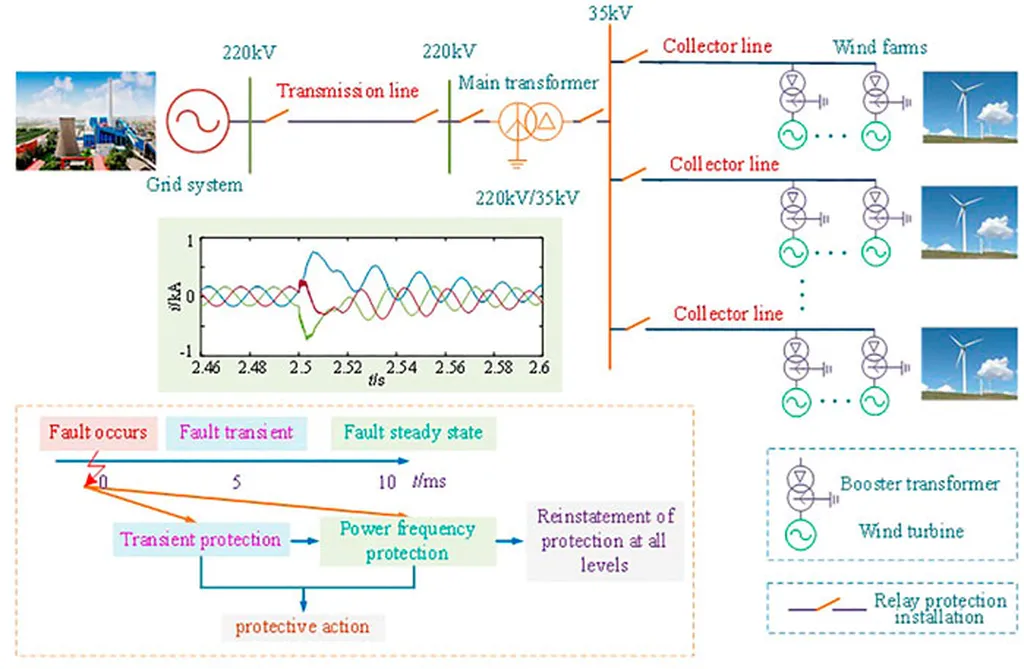In the rapidly evolving energy landscape, the integration of large-scale renewable energy sources like wind and solar power is transforming traditional power grids. However, this shift brings unique challenges, particularly in ensuring the reliability of transmission line protection systems. A recent study published in the *International Journal of Electrical Power & Energy Systems*, titled “Pilot protection for transmission line of large-scale renewable energy system based on morphological similarity distance,” addresses these challenges head-on. Led by Shuo Zhang from the School of Electrical Engineering at Shandong University in China, the research proposes a novel pilot protection method that could significantly enhance the stability and safety of renewable energy systems.
Traditional power grids have relied on conventional pilot protection methods, which may struggle with the fault characteristics of renewable energy systems, such as amplitude limitations, frequency offsets, and phase angle distortions. These issues can reduce the sensitivity of conventional protections, leading to potential failures or maloperations. “The integration of large-scale renewable energy sources introduces new fault characteristics that conventional protection systems are not designed to handle effectively,” explains Shuo Zhang. “Our research aims to bridge this gap by developing a protection method that can reliably identify faults even under challenging conditions.”
The proposed pilot protection method leverages the similarity of current waveforms at both ends of the transmission line to construct a robust protection criterion. This approach ensures reliable operation even under high fault resistance, up to 300 ohms, a significant improvement over existing systems. To validate the effectiveness of their method, the research team conducted extensive hardware-in-loop experiments using a real-time digital simulator, adhering to dynamic simulation test benchmarks.
The implications of this research are far-reaching for the energy sector. As renewable energy systems continue to expand, ensuring the reliability of transmission lines is crucial for maintaining grid stability and preventing costly outages. “This innovative protection method could become a game-changer for the energy industry,” says Shuo Zhang. “By enhancing the reliability of transmission line protection, we can support the broader adoption of renewable energy sources and contribute to a more sustainable energy future.”
The study’s findings were published in the *International Journal of Electrical Power & Energy Systems*, a respected journal in the field of electrical engineering. The research not only addresses immediate technical challenges but also paves the way for future developments in renewable energy integration. As the energy sector continues to evolve, such advancements will be essential in building a more resilient and sustainable energy infrastructure.

